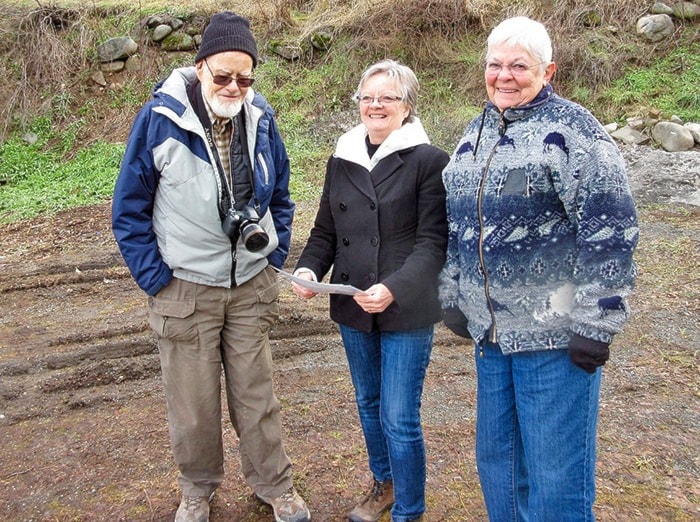by Bernie Fandrich
There is no disputing the important role that the Chinese have played in Lytton’s past.
Heritage BC just announced that the Chinese Historic Places Recognition Project has announced special recognition for two Lytton sites: the Lytton Joss House site and Rip Van Winkle’s Flats & Brownings Flats, (Chinese placer mining sites along the Fraser River), have been selected from 77 distinct Chinese sites from all over BC. Ten sites were recognized throughout the province.
The Lytton Joss House - or Joss Temple - is probably the site of the oldest Chinese Joss House in BC. It was located in the heart of Lytton for half a century. Dorothy Dodge, curator of the Lytton Archives and Museum for many years, is excited about the special designation.
“Lytton has such a rich past and has played a very important role in the early days of our province,” she says. “The Chinese were a very important part of Lytton’s history.”
The multi-purpose building was officially opened with much fanfare in 1883. Chinese visitors from Victoria and New Westminster steamed to Yale on the sternwheeler Reliance, then by rail and stagecoach to Lytton. It was quite a celebration with balloons, music and firecrackers.
The Joss House housed two deities and provided spiritual, emotional, and physical support to the Chinese railway workers, gold rush mining labourers, local merchants and farmers.
It represented hope during a time often filled with suffering and despair for the Chinese.
One of the purposes of the Joss House was to take care of sick and injured workers. When Chinese Work Camp 37 was attacked by a gang just south of Lytton in 1883, resulting in the murder of one worker and injury to seven or eight others, one of the injured was carried three miles to the Joss House so other Chinese could care for him.
The structure remained under Chinese control from 1878 until 1928. From 1901 until 1928 it became a matter of national importance involving the Dominion of Canada, the Chinese Consulate General, Chinese businessmen, and local residents.
In 1933, a fascinating account of the earlier turmoil surrounding the potential sale of the Joss House property to a neighbor was written in the Vancouver Province newspaper.
A copy of the intriguing news story – “Gods in a Lytton Woodshed” - was in the possession of Joe Chute, a teacher, principal, and former Lytton mayor. He gave a copy of the story to Lorna and Bernie Fandrich who, in 1980, had purchased the vacant lot that had once housed the Joss House.
Although intrigued by the mystery surrounding the lot after reading the Province story, it took until now for circumstances to allow them to develop of the lot. Lorna has plans to build a replica of the original structure and operate it as the Lytton Chinese History Museum.
The Chinese community in BC is fascinated by the project and has provided support and publicity.
“The special designation by Heritage BC and the media coverage that the project has already received in Canada’s largest Chinese newspaper, Ming Pao, has further stimulated interest in the Chinese community,” Lorna said.
Fandrich has been invited to speak at the Historic Temple Conference, an international conference held in Marysville, California in March.
“I’m honored to be a speaker at the conference,” she says. “Sharing ideas with those who are already successfully operating Chinese Museums and Temples will benefit my project.
“Completion of the Museum should attract many Chinese tourists to Lytton,” she added.
Look for details about the Browning’s Flat and Rip Van Winkle Flats Gold Rush Landscapes in an upcoming story.
Site preparation and construction of the building is scheduled to begin early in March.
